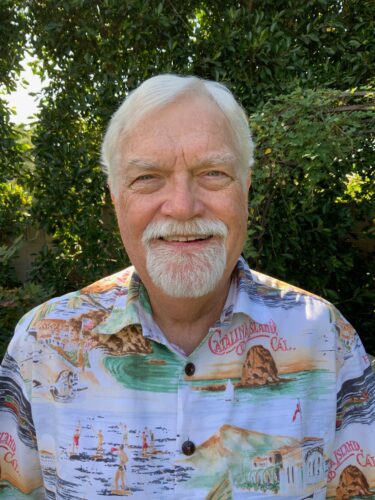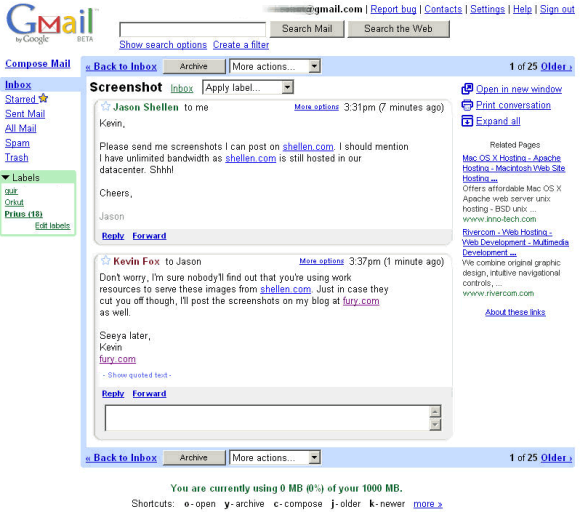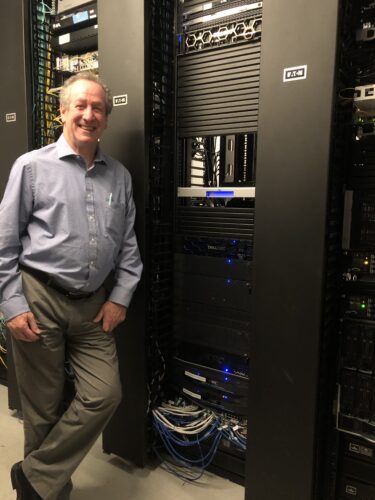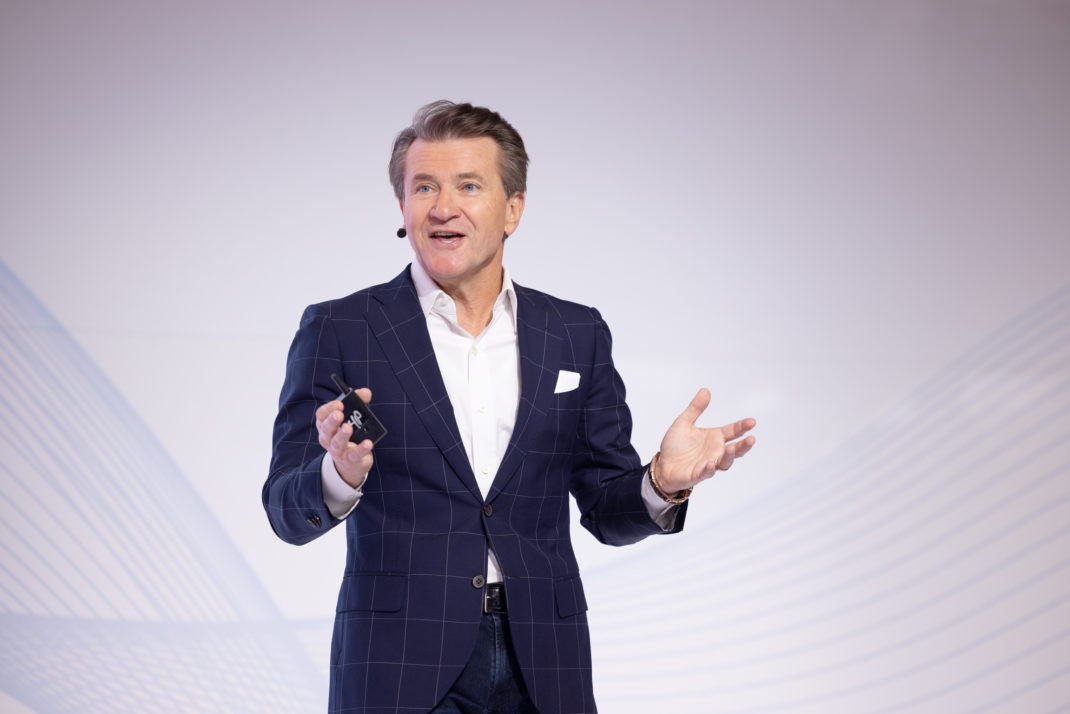My celebration of longevity in the IT industry continues. See part 1 where I introduce my cast of OG characters. In this post, they speak about some of their memorable first purchases.
Back in the early days of the PC pioneers, we had to work a lot harder to make everything work together. Mark Lillie created Connecticut Blue Cross’ first internet connections, first web server and built the first set of web pages and installed the first LAN at an HMO that connected an HP minicomputer to a Novell Netware server, both running Oracle databases. “Yes, it actually worked and allowed our clients to easily query the HMO membership data base using PC tools they were already familiar with,” he remembered. Mark also remembers in those pre-internet times when he set up a 1.5M bps T1 lines between three of his offices and impressed his bosses with network links that allocated chunks of 56k bps bandwidth. That’s kilobytes for all of you that are reading quickly. “It was our very own wide-area network.”
 Gayle Barton remembers the first time she wrote a purchase order for $75,000 worth of desktop computers when she was at St. Lawrence University. “It was probably three times my annual salary at the time and was quite exciting.” She got a handle on things since then: “For several jobs I changed the desktop purchasing process from ‘everybody gets what they want,’ with all the attendant complications of ordering, configuring, delivering, and training, to a standardized system. People got four choices: laptop or desktop, Mac or PC, with exceptions for people who genuinely needed something else. We saved hundreds of person-hours and much angst every year.” She developed the first web pages at one university “at a time when the dining hall menu, the bus schedule, the weather and the campus directory were the most popular pages. We gradually moved into helping with digital storytelling for both faculty and students and marrying databases to the web.” Gayle also remembered picking her university’s domain name with the director of operations. “We knew we weren’t the right people to choose this but no one else would understand or care, so we just had a laugh and went forward. Our first user was a math professor who messaged his family in Israel.”
Gayle Barton remembers the first time she wrote a purchase order for $75,000 worth of desktop computers when she was at St. Lawrence University. “It was probably three times my annual salary at the time and was quite exciting.” She got a handle on things since then: “For several jobs I changed the desktop purchasing process from ‘everybody gets what they want,’ with all the attendant complications of ordering, configuring, delivering, and training, to a standardized system. People got four choices: laptop or desktop, Mac or PC, with exceptions for people who genuinely needed something else. We saved hundreds of person-hours and much angst every year.” She developed the first web pages at one university “at a time when the dining hall menu, the bus schedule, the weather and the campus directory were the most popular pages. We gradually moved into helping with digital storytelling for both faculty and students and marrying databases to the web.” Gayle also remembered picking her university’s domain name with the director of operations. “We knew we weren’t the right people to choose this but no one else would understand or care, so we just had a laugh and went forward. Our first user was a math professor who messaged his family in Israel.”
Adam Kuhn recalls that mainframe that I helped power down. “It was an IBM 4381 model 13. It had, at the end of its lifetime, a whopping 16 MB of memory and 7.5 GB of disk storage.”
David Goodman said, “Lotus Agenda was the first personal information manager that was useful, it would categorize everything for you. I used it for years.” He contrasted it with Workday, “which was a great product but sadly the company didn’t care about the non-profit sector. Ultimately, we implemented it on a reduced scale. The head of HR and I were never on the same page about the technology, which impeded its deployment.”
When John Cronin was at a major telco company, he labored mightily to get Windows 95 to work with a team that was predisposed with OS/2: “they wanted us to fail and started sabotaging our work when they saw that Windows was a better bet.” Ah, those were the days: I labored to write a B2B book on OS/2 that went through numerous revisions, and was never published. He also designed that first Monsanto LAN (mentioned in part 1) to run DECNET protocols: this was prior to the internet but “once that took root, it was trivially easy to add TCP/IP protocols.“
Sometimes things didn’t always go according to plan. Jerry Hertzler went to their Bamako, Mali chapter in 1998. “I tried to connect their network and local email server to our global network but couldn’t complete the task.” Adam uses Microsoft Teams now, but “we bought some Teams desk phones that were both awful and unnecessary since the Teams PC client was excellent. We were lucky to sell them for a quarter of their purchase price!” Gayle bought a specialized academic software tool for $30,000 that was installed in just one classroom. “We never got any faculty on board and it never got used, but the students liked it.”
Sam Blumenstyk was involved in building various LANs and email systems at the Manhattan DA’s office and at multiple NY City agencies where he was one of the founders of an innovative interagency consulting group. He eventually became the Associate Commissioner of the organization. He was able to start with PC technology when it first came out and watch it evolve when he went to work for Prudential Bache Securities. He points to the longevity of Banyan Vines, which was one of the more innovative LAN operating systems, as standing the test of time. I was a fixture at many Banyan user group meetings for years because their users had so many great stories to tell.
 Terry Evans said: “The IBM PC was one of the best decisions I ever made, because at the time there were several other contenders.” Despite his early IBM experience, he wasn’t a total fanboy: “Remember DISOSS and Displaywriters? All I can remember is the huge portion of my budget allocated to support them.” I do: I was an early DISOSS user, which combined electronic mail with centralized document storage when I worked in one of the early end user computing centers for a large insurance company.
Terry Evans said: “The IBM PC was one of the best decisions I ever made, because at the time there were several other contenders.” Despite his early IBM experience, he wasn’t a total fanboy: “Remember DISOSS and Displaywriters? All I can remember is the huge portion of my budget allocated to support them.” I do: I was an early DISOSS user, which combined electronic mail with centralized document storage when I worked in one of the early end user computing centers for a large insurance company.
Don Berliner remembers an early development project he did for the treasurer’s department of a major multi-national that was actually written in Fortran. Since then he has gotten more involved in building Salesforce applications. I was writing Fortran apps when I was in grad school. I am sure there are still apps running somewhere using it.
The IT purchase process
I asked my sources for some of the seminal moments where they made major tech purchases. Jerry recalls how they got involved with NetSuite. “We purchased it in 2017. It changed how we do our operations outside the US. We interviewed users in 23 countries and had reference calls with the UN and City of Orlando. It now runs in chapters in 150 countries.” Sam mentioned when he first got involved with VMware. “That had the biggest impact on my business, and still does,” he said.
For Terry, it was when they moved applications from mainframes to PCs. “There were many doubters that allowing people to do their own personal computing would be a waste of time and money. Plus the fear of losing control of what people were allowed to do and NOT allowed to do. I felt at the time that this was the future, but really had no idea how far PCs would advance.” He put in place the first PC purchase standards to make support and mass purchases easier.
Erica Wilson doesn’t regret any of her tech purchase decisions. “Because in cybersecurity, traditionally almost all purchases were truly necessary if not required.” She recalls purchasing either an automated patching solution or vulnerability scanning product in her first job.
Next up is part 3 about understanding the career arcs of your people.


 Not many chief security officers will point out not one but two times they took a job while their companies were under attack. But this is what happened to Jaya Baloo, who is now chief security officer at cybersecurity provider Rapid7 Inc. Even more interesting, she considers both times — which happened at two different companies — career highlights. She has a lot more to say in
Not many chief security officers will point out not one but two times they took a job while their companies were under attack. But this is what happened to Jaya Baloo, who is now chief security officer at cybersecurity provider Rapid7 Inc. Even more interesting, she considers both times — which happened at two different companies — career highlights. She has a lot more to say in  Erica Wilson has had many career transitions “but I’d have to say taking on a CISO role was certainly a good experience. I learned a LOT about myself and why having a people-first mindset – supporting their wellbeing and growth — needs to be critical for all organizations. By doing so, with a small but mighty team we were able to accomplish some amazing things.”
Erica Wilson has had many career transitions “but I’d have to say taking on a CISO role was certainly a good experience. I learned a LOT about myself and why having a people-first mindset – supporting their wellbeing and growth — needs to be critical for all organizations. By doing so, with a small but mighty team we were able to accomplish some amazing things.” Gayle Barton remembers the first time she wrote a purchase order for $75,000 worth of desktop computers when she was at St. Lawrence University. “It was probably three times my annual salary at the time and was quite exciting.” She got a handle on things since then: “For several jobs I changed the desktop purchasing process from ‘everybody gets what they want,’ with all the attendant complications of ordering, configuring, delivering, and training, to a standardized system. People got four choices: laptop or desktop, Mac or PC, with exceptions for people who genuinely needed something else. We saved hundreds of person-hours and much angst every year.” She developed the first web pages at one university “at a time when the dining hall menu, the bus schedule, the weather and the campus directory were the most popular pages. We gradually moved into helping with digital storytelling for both faculty and students and marrying databases to the web.” Gayle also remembered picking her university’s domain name with the director of operations. “We knew we weren’t the right people to choose this but no one else would understand or care, so we just had a laugh and went forward. Our first user was a math professor who messaged his family in Israel.”
Gayle Barton remembers the first time she wrote a purchase order for $75,000 worth of desktop computers when she was at St. Lawrence University. “It was probably three times my annual salary at the time and was quite exciting.” She got a handle on things since then: “For several jobs I changed the desktop purchasing process from ‘everybody gets what they want,’ with all the attendant complications of ordering, configuring, delivering, and training, to a standardized system. People got four choices: laptop or desktop, Mac or PC, with exceptions for people who genuinely needed something else. We saved hundreds of person-hours and much angst every year.” She developed the first web pages at one university “at a time when the dining hall menu, the bus schedule, the weather and the campus directory were the most popular pages. We gradually moved into helping with digital storytelling for both faculty and students and marrying databases to the web.” Gayle also remembered picking her university’s domain name with the director of operations. “We knew we weren’t the right people to choose this but no one else would understand or care, so we just had a laugh and went forward. Our first user was a math professor who messaged his family in Israel.” Terry Evans said:
Terry Evans said: Jerry Hertzler
Jerry Hertzler  Adam Kuhn
Adam Kuhn Sam Blumenstyk
Sam Blumenstyk Qualys’ annual security conference returned to a live-only event this week at the Venetian Hotel in Las Vegas, and the keynote addresses started things off on a very practical note… about selling coconuts, toasters, and carbon monoxide detectors. The first two keynotes featured speeches from both Shark Tank celebrity businessman and CEO of Cyderes, Robert Herjavec, and Qualys’ President and CEO, Sumedh Thakar. Both spoke around the similar theme of qualifying and quantifying digital cyber risks.
Qualys’ annual security conference returned to a live-only event this week at the Venetian Hotel in Las Vegas, and the keynote addresses started things off on a very practical note… about selling coconuts, toasters, and carbon monoxide detectors. The first two keynotes featured speeches from both Shark Tank celebrity businessman and CEO of Cyderes, Robert Herjavec, and Qualys’ President and CEO, Sumedh Thakar. Both spoke around the similar theme of qualifying and quantifying digital cyber risks.